Arnaldo Pomodoro has recently left us, and perhaps, alongside the catalog of his production, an event deserves to be remembered that for his entire life linked him to his homeland, Montefeltro. Indeed, in 1975 Pomodoro began the work that Argan called “a recapitulation and balance sheet of an entire past”: Pietrarubbia Group (Pomodoro Foundation). It consists of seven large sculptures (a group of large swiveling and partly movable panels) made over a period of forty years, concluded in 2015. In fact, it was in the village of Pietrarubbia, in the province of Pesaro and Urbino, a hamlet set in a fascinating nature made of woods and gullies, that Pomodoro first found the inspiration for the first of these sculptures and then the occasion for an important commission, that of the altarpiece for the village’s small church, in memory of a girl who had passed away, at the request of her family, the owners of the Mancini art gallery in Pesaro.
The medieval hamlet (“the castle”) had been reduced to abandonment, and in 1990, Pomodoro became willing to rethink the restitution of the entire small church: in addition to the superb and highly refined monumental altarpiece, he worked out the altar structure and furnishings. He even thinks in a special way about the floor, for which he reuses the old stones from the paving of a square in Milan, which had recently been deskewed and renovated, because he wanted the implicit substance, the material itself, of the place of encounter and welcome to remain alive.
Maria Assunta Paci, then the mayor of Pietrarubbia, which had and still has a few hundred inhabitants, decided to think big and again involved the sculptor for a project that would become TAM -the school for the Artistic Treatment of Metals. In a few years the village of Pietrarubbia was gradually purchased by the municipality, as much in the naturalistic areas as in the buildings, and restored to house a training center of first regional and then international caliber where intensive courses related to metalworking could be held.
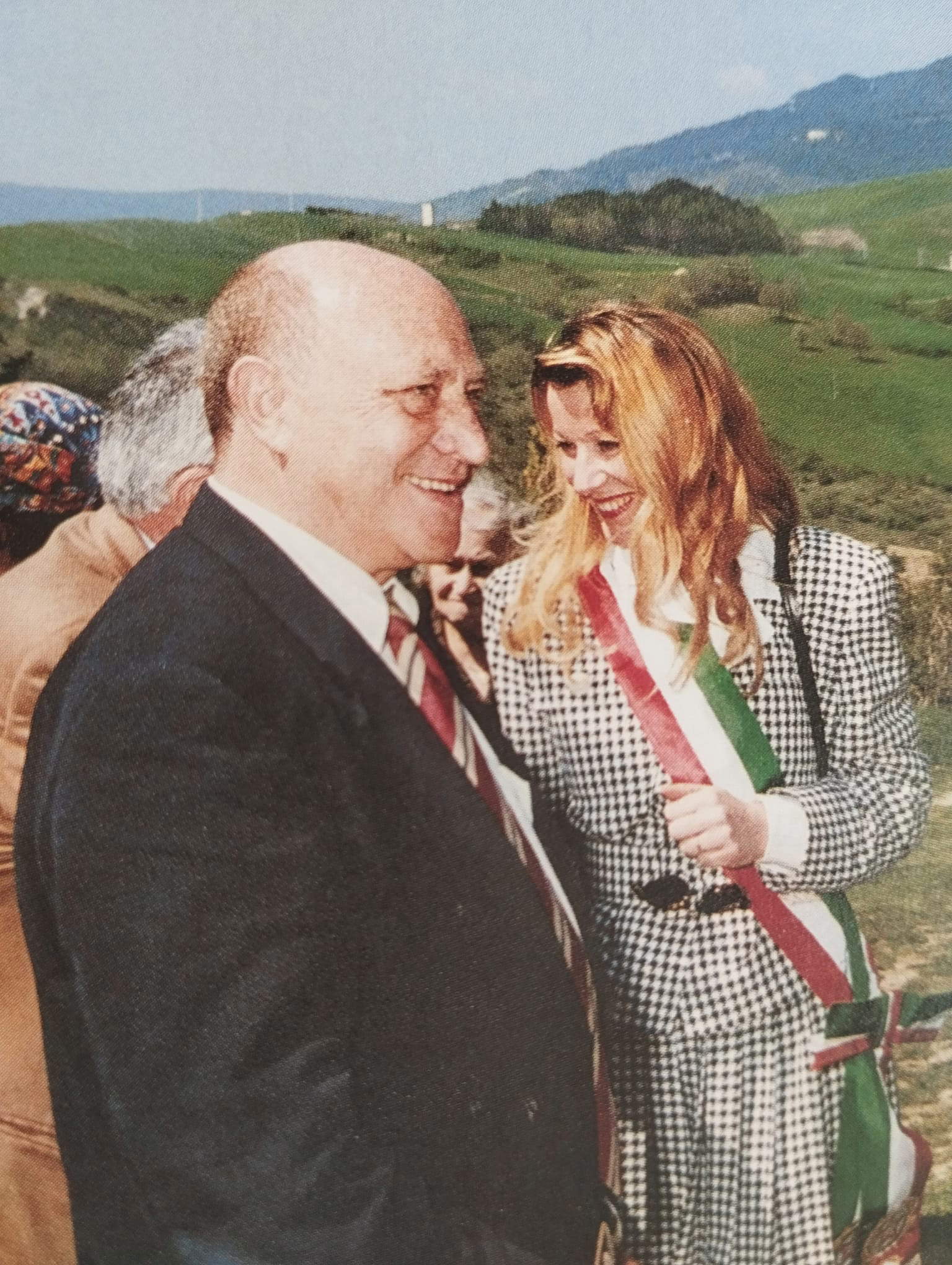
The idea was born by handing over to the sculptor the thread of an ancient tradition of blacksmiths who for centuries had worked within the iron walls of Pietrarubbia (=“red-stone,” because of the presence of iron). Pomodoro agreed to organize the courses: he thought out their physiognomy, their disciplinary, practical and theoretical ramifications, convened the teachers (Gillo Dorfles, Colonnetti, Barilli...) and for years played the role of director and teacher himself. European and regional funds were able to support for over twenty years an adventure of real transformation and a direct transfer of knowledge just as happened in the ancient medieval workshops. Pupils had to stay for eight months in the village, carrying out learning and experimentation that filled the days and continued outside the classrooms and workshops in a situation of creative fecundity that has few other similar examples.
Pomodoro always remained attached to Pietrarubbia and ensured that after him other great artists, with equal passion, directed and guided the TAM courses: Mattiacci above all and Nunzio to follow. The great affair of this forge of works and encounters came to an end in 2014, with the exhaustion of European funding and the Region’s difficulty in shouldering the full cost of management: the professionalizing professionals no longer received support until a (hopefully not final) closure of the Center. But Pomodoro wanted to keep alive his connection with this place by donating a series of his own works, from large sculptures such as The Chariot with Obelisk, to drawings, to projects that summarize all the main phases of his path and that now form the nucleus of the Pietrarubbia Museum of Contemporary Art.
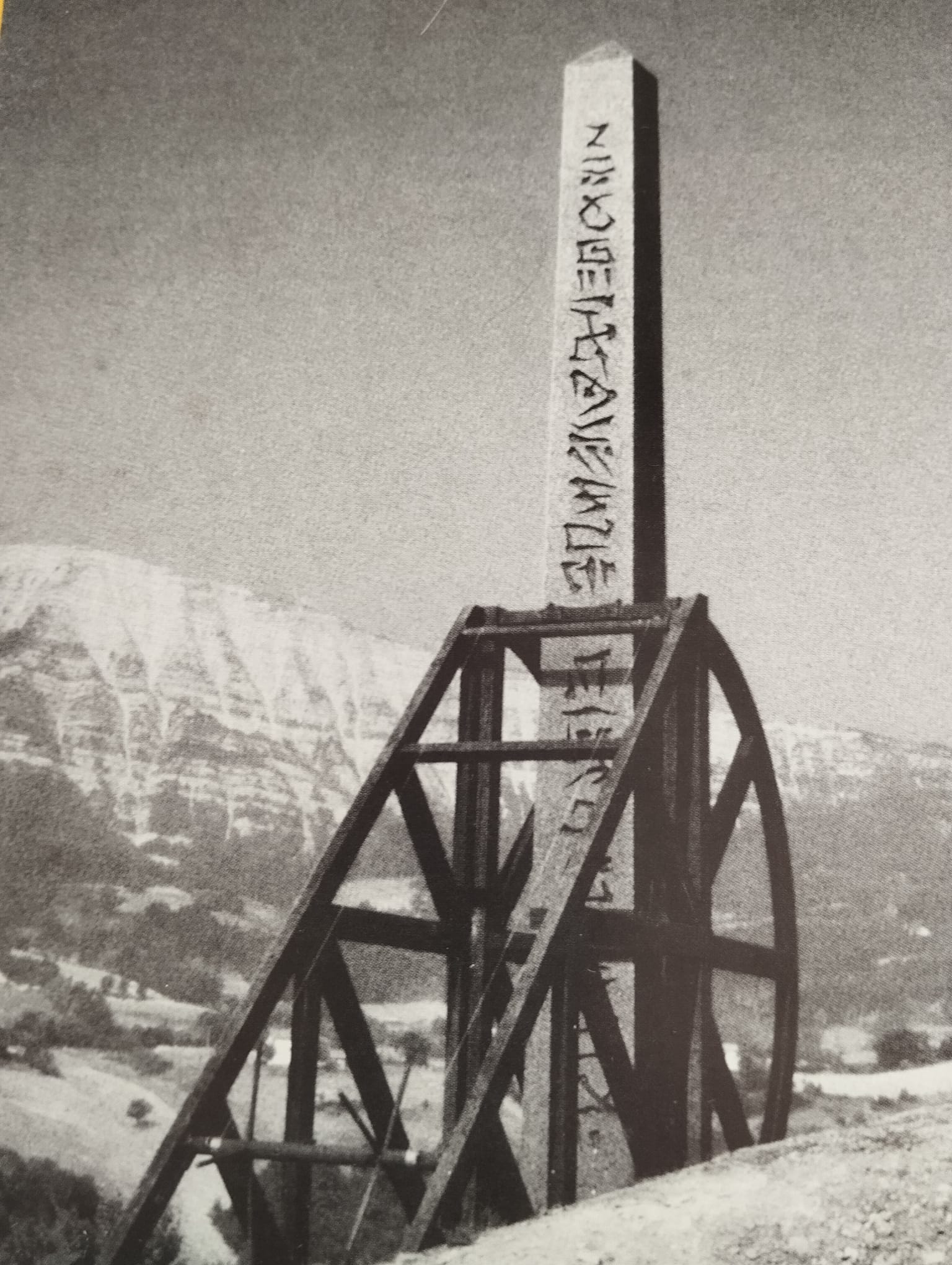

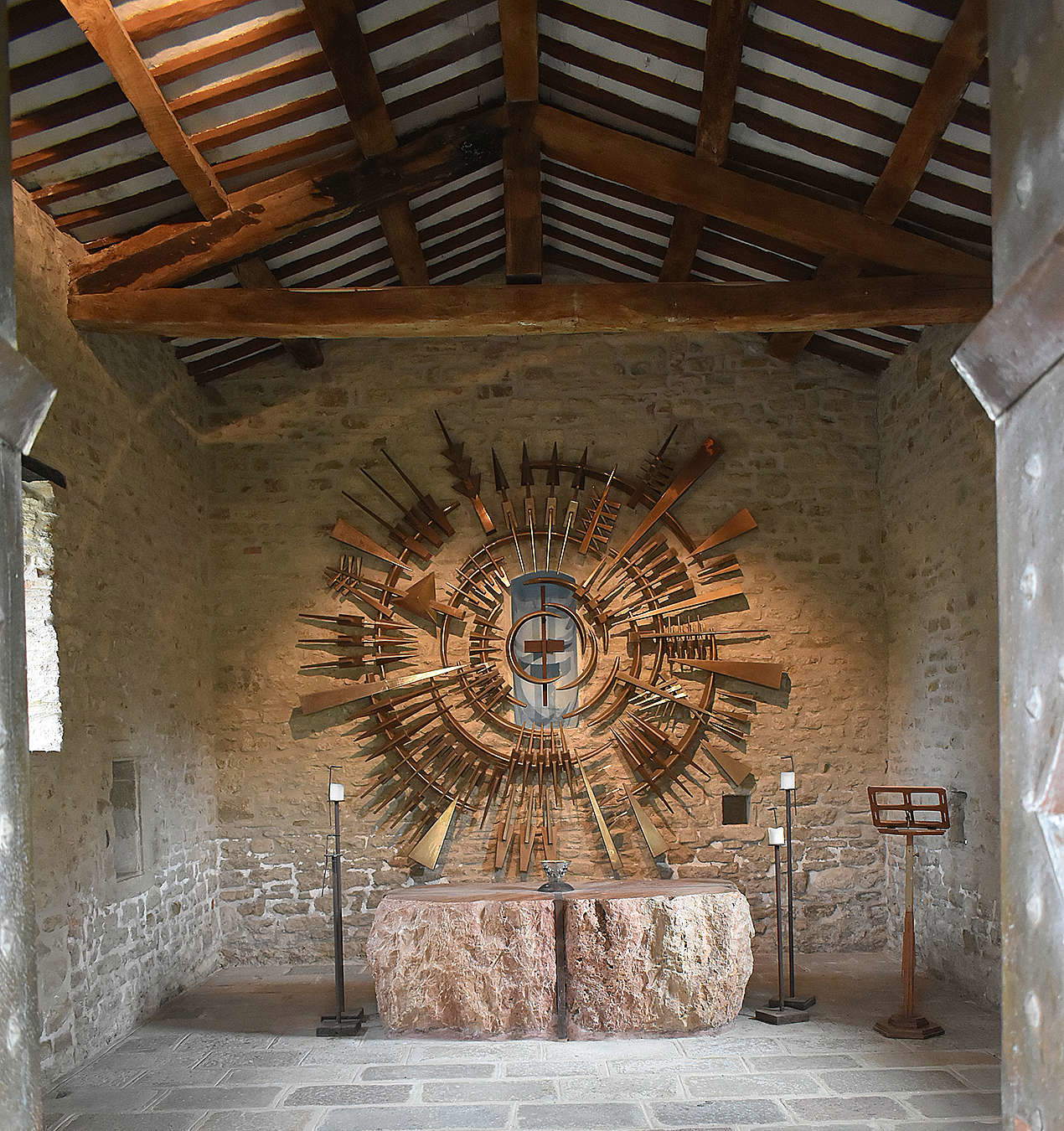
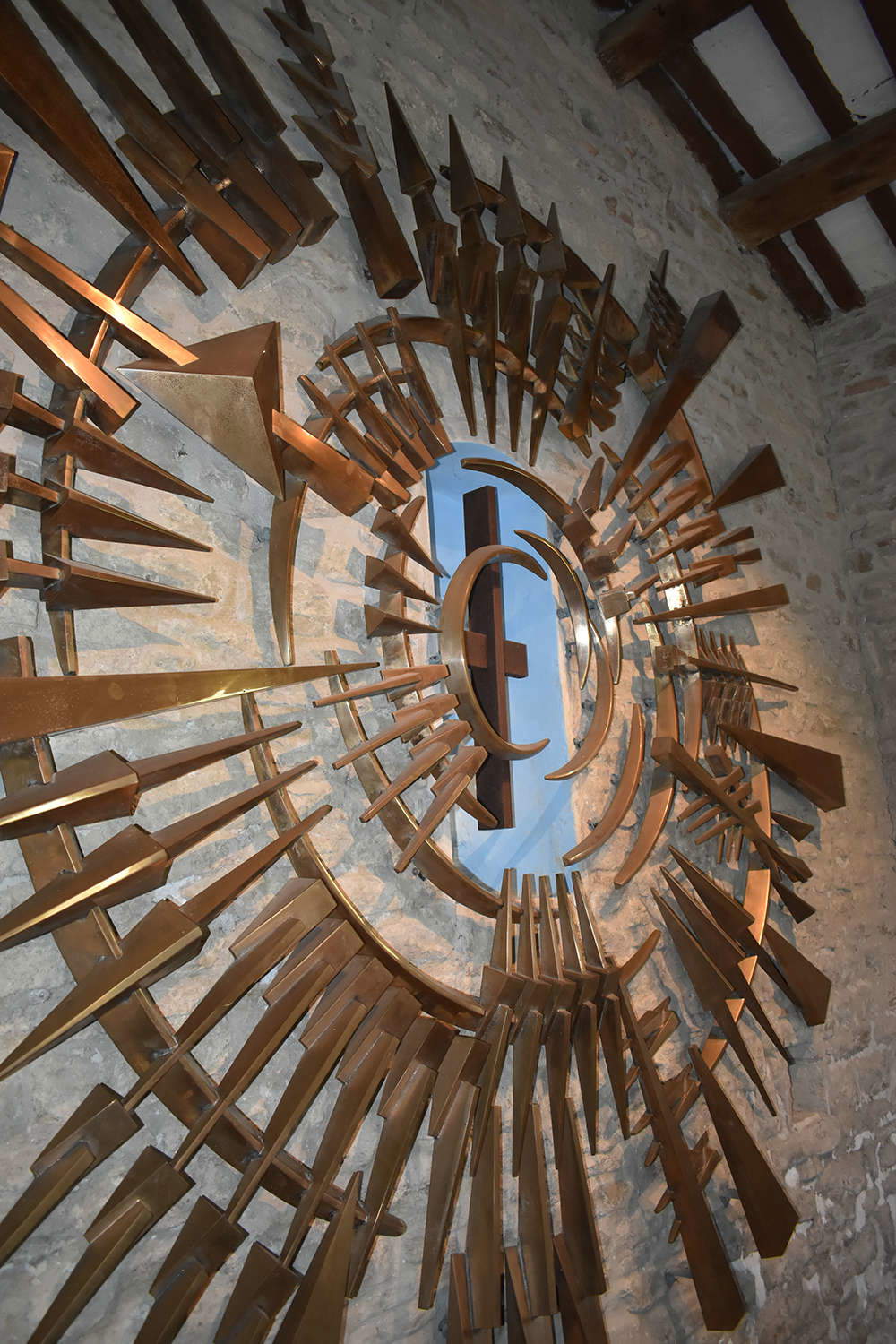
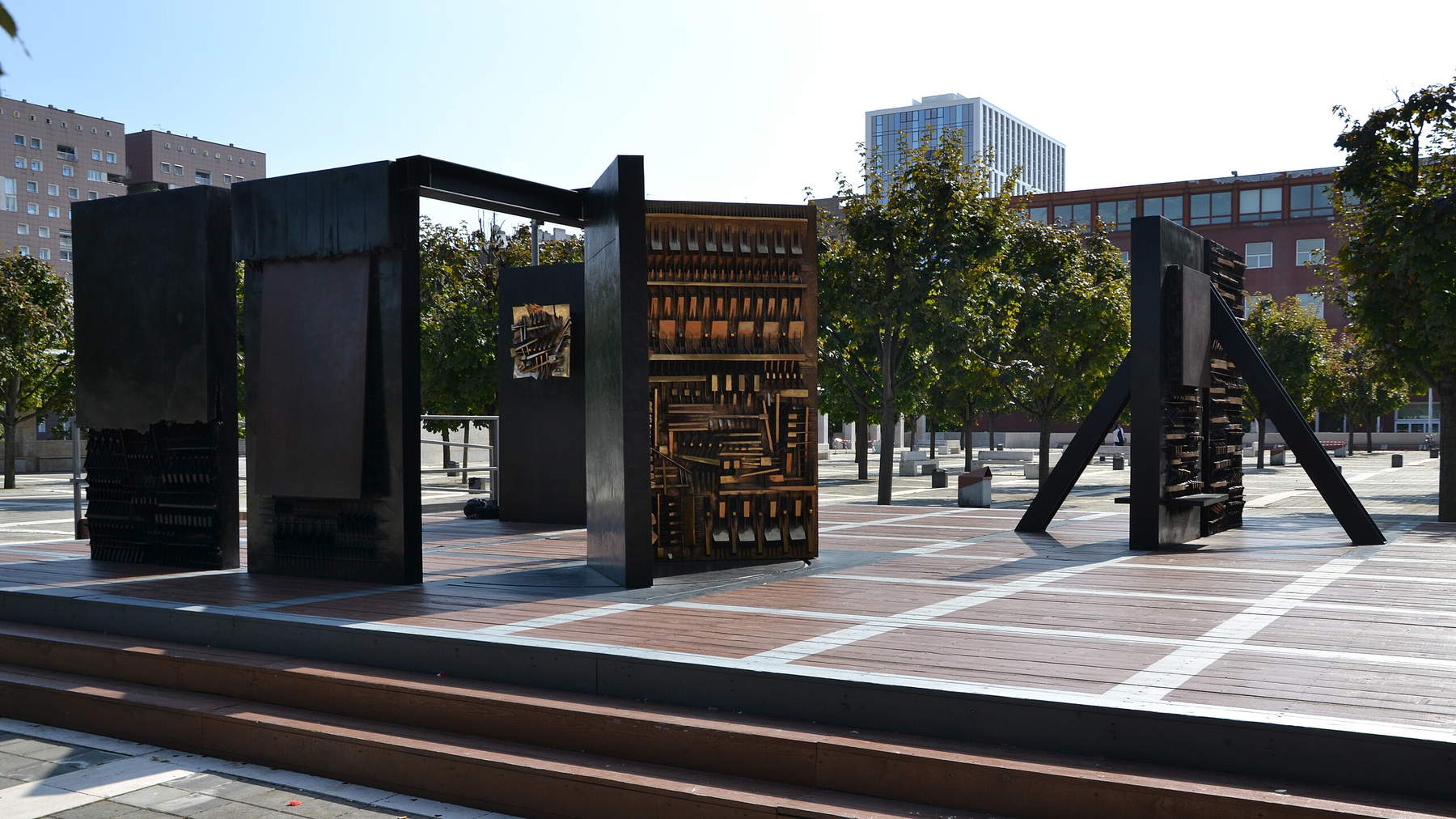
In fact, the tiny municipality continues to challenge the giants and has obtained a series of substantial grants that will allow by 2026 a complete redevelopment of the facilities, the hospitality sector (the beautiful Locanda del Vicariato is scheduled to reopen), the museum management team and an expansion of the collection that continues to receive donations of works from artists who have passed through the courses or loved the experience.
In a forward-looking vision of how public patronage can be declined today, in fact, all the production of TAM students had remained the property of the Region and in the custody of the Municipality, which today overflows with objects, jewelry, and sculptures that are the fruit of the imagination and elaborations born within the courses. The Pomodoro Foundation will collaborate with its own initiatives on the educational section of the Museum, which will finally be able to open to the public to recount the cross-cutting practice of inventing new possibilities.
Warning: the translation into English of the original Italian article was created using automatic tools. We undertake to review all articles, but we do not guarantee the total absence of inaccuracies in the translation due to the program. You can find the original by clicking on the ITA button. If you find any mistake,please contact us.